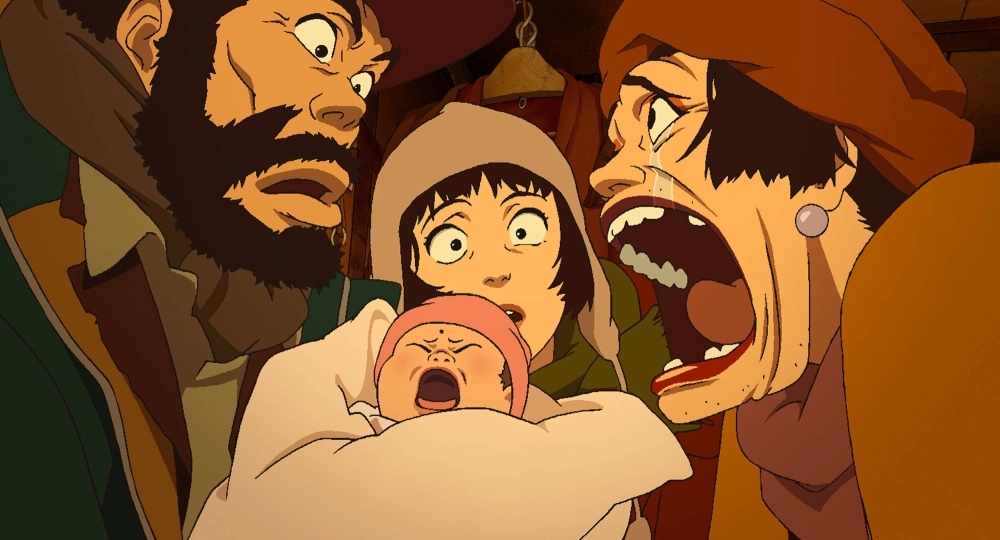Kidnappings. Gangsters. Drag clubs. Car crashes. Stabbings. “Tokyo Godfathers” is not your average Christmas movie.
Yet in the years since its release, the 2003 anime film by the late director Satoshi Kon has become a holiday classic. It’s being screened this month in theaters in Japan, North America and the U.K. to celebrate its 20th anniversary.
“Tokyo Godfathers” centers on three homeless people who have formed a kind of makeshift family. There’s Gin (voiced by Toru Emori), a middle-aged man whose drinking and gambling cost him his wife and daughter, Miyuki (Aya Okamoto), a teenage runaway, and Hana (Yoshiaki Umegaki), a transgender woman and former drag performer. On Christmas, the trio discovers an abandoned baby, and Hana convinces her companions to go on a quest to find the child’s mother. So begins a journey across Tokyo filled with action, danger, and even a few Christmas miracles.

















With your current subscription plan you can comment on stories. However, before writing your first comment, please create a display name in the Profile section of your subscriber account page.